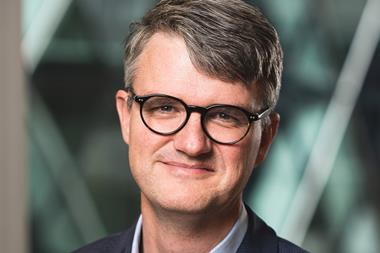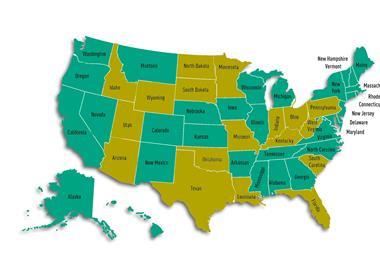Funding for climate action and policies at subnational level is essential to keep the world on track for 1.5°C of warming, especially as state and regional governments represent over 50% of all environment and climate spending, accroding to Climate Group.
New research by the non-profit organisation published this morning looked at the mechanisms states and regions can use to raise funds to accelerate to net zero and adapt to climate change: particularly carbon pricing, green bonds, national government funding and taxes and fees.
The report also examined ways in which subnational governments can effectively spend climate finance and how they can help other groups access that finance too.
While there are clear differences in their level of autonomy, the report made several recommendations about how governments can make better use of climate funds and the support they need to do so. It especially highlighted opportunities for:
- greener procurement, where subnational governments spend proportionately much more than national governments;
- tailored incentives and regulations for private sector investors to align government and business action;
- better support for states and regions in accessing existing finance sources and understanding different mechanisms for raising climate finance in a sustainable way.
Champa Patel, executive director of governments and policy at Climate Group, said: “Net zero goals can’t be reached without proper climate financing – but states and regions still face too many barriers to accessing it. This is despite being the level of government closest to the people they serve and with a critical role to play in reducing emissions and improving communities’ quality of life.”
He added that Climate Group’s research shows subnational governments “don’t have to wait for international institutions or national governments to take action – they can do it now. States and regions can raise funds, allocate green budgets and incentivise public-private investment while driving down emissions. This is clearly a win-win situation”.
Climate group surveyed 10 states and regions in 2022-23, including Andalucía;, Baden-Württemberg, Lombardy, Nadeira, Northern Ireland and North Rhine-Westphalia as part of its research study to understand more about the barriers to accessing and distributing climate finance at this level of government.
Federated Hermes sets up ‘article 9’ fund with CCLA
Federated Hermes has launched the Federated Hermes Sustainable Global Investment Grade Credit Fund with CCLA, the UK’s largest charity fund manager whose clients also include religious organisations and the public sector.
The investment fund will seek to deliver a total return with a reduced environmental footprint compared to the benchmark, which is measured using carbon, water and waste footprint metrics, it was announced.
As well as using an exclusions framework, the fund uses a barrier for names entering the portfolio, using the teams’ proprietary scoring models and engagement expertise, Federated Hermes stated. While the fund is weighted to sustainable leaders, it will opportunistically invest in issuers with clear momentum in sustainability.
Federated Hermes said the fund conforms with ‘Article 9’ of the Sustainable Finance Disclosure Regulation (SFDR) and sits within the firm’s ‘Sustainable’ range of products.
The launch of this fund builds upon a well-established relationship between Federated Hermes and CCLA:last year, Federated Hermes’ credit team was appointed by CCLA as the portfolio manager for two of its fixed income funds.
Ben Funnell, head of investment solutions at CCLA, said: “Investment grade credit as an asset class has become substantially more attractively valued over the last 15 months, in our view, and now offers sufficient margin of safety to allow us to invest. We expect good real returns from the sector given starting yields today. Federated Hermes has significant expertise in the space, and aligns with our firm’s and our investors’ values in terms of responsible investing.”













